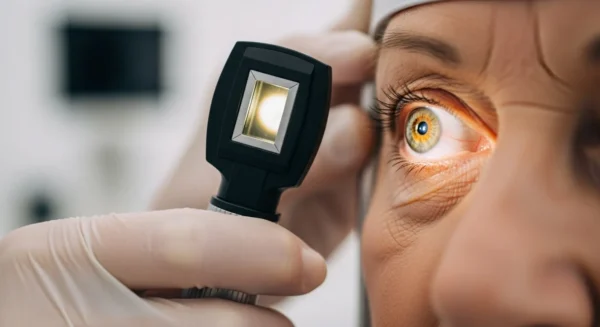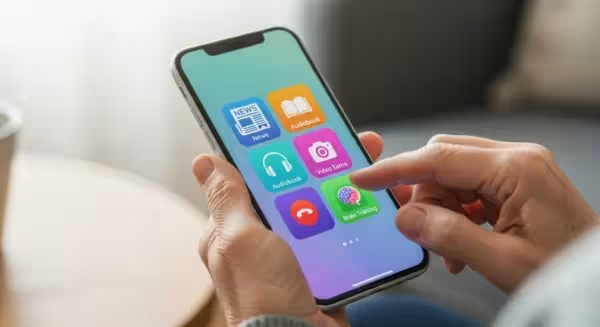
A Step-by-Step Guide to Choosing and Using Brain-Training Apps Safely
Navigating the world of technology can feel overwhelming, but with a clear, safety-first approach, you can confidently find and use senior apps that are a good fit for you. This guide will walk you through the process, ensuring your experience is positive and beneficial.
Step 1: Always Start with a Conversation with Your Doctor
Before you download any app or start a new wellness routine, the most important first step is to speak with your doctor, especially if you have any concerns about your memory or cognitive health. Your doctor can provide a proper evaluation, rule out any underlying medical issues, and offer personalized advice. They can help you set realistic goals and determine if cognitive training is an appropriate activity for your specific health situation. This conversation is the foundation of a safe and effective wellness journey.
Step 2: Identify Your Personal Goals
What do you hope to gain from using a brain-training app? Taking a moment to think about your goals will help you choose the right tool. Are you looking to:
- Challenge your memory with fun recall games?
- Improve your focus and attention for reading or hobbies?
- Work on problem-solving and logical reasoning skills?
- Simply find a new, engaging, and mentally stimulating activity?
Knowing what you want to achieve will make it easier to sift through the many options and find an app that aligns with your interests and needs.
Step 3: Explore a Few Reputable Apps for Seniors
There are hundreds of brain-training apps available, but not all are created equal. Look for apps that are well-established, have positive reviews, and are designed with user-friendliness in mind. Here are a few examples known for their quality and accessibility. We are not endorsing any single app, but providing these as a starting point for your research.
Lumosity: One of the most well-known brain-training apps, Lumosity offers a wide variety of games focusing on memory, attention, speed, flexibility, and problem-solving. The games are often bright and engaging.
- Good for Seniors because: It provides a personalized training program that adapts to your performance, so it remains challenging but not overwhelming. The interface is relatively clean and easy to navigate.
- Things to Consider: The free version is quite limited, and a subscription is needed to unlock the full program.
Elevate: This app focuses on practical, real-world skills like reading comprehension, writing clarity, and even math. The games are designed to feel more like educational tools than abstract puzzles.
- Good for Seniors because: The emphasis on everyday skills can feel very practical. It features a clean design with clear instructions and allows you to track your progress in different skill areas.
- Things to Consider: Like Lumosity, a subscription is required for full access to all its games and features.
CogniFit: This app has a more clinical feel and was developed with input from neuroscientists. It offers a detailed assessment to identify your cognitive strengths and weaknesses, then tailors a training program for you.
- Good for Seniors because: It provides in-depth performance tracking and targets over 20 different cognitive skills. It’s a good choice if you are interested in a more data-driven approach to your cognitive training.
- Things to Consider: The sheer amount of information can be overwhelming for some users. It also operates on a subscription model.
AARP Staying Sharp: This program, offered by the AARP, is part of a larger platform focused on the six pillars of brain health. It includes a variety of games, articles, recipes, and activities.
- Good for Seniors because: It comes from a trusted organization focused on older adults. The content is specifically tailored to a senior audience and takes a holistic view of brain health beyond just games.
- Things to Consider: Full access is typically a benefit for AARP members, so it may require a membership.
Step 4: Getting Started Safely and Comfortably
Once you’ve chosen an app to try, follow these tips for a safe and enjoyable experience:
- Start Slowly: Begin with just 10-15 minutes a day. This is enough time to engage your brain without causing fatigue or frustration. You can always increase the time later if you feel comfortable.
- Create a Comfortable Environment: Use your tablet or phone in a well-lit room to reduce eye strain. Sit in a comfortable chair that supports your back. Consider adjusting the font size on your device to make it larger and easier to read.
- Take Breaks: Remember the 20-20-20 rule. Every 20 minutes, look at something 20 feet away for at least 20 seconds. This simple habit helps rest your eyes.
- Don’t Get Discouraged: The purpose of these games is to challenge you. It’s perfectly normal to not get a perfect score. Focus on the process and the enjoyment of learning, not just the outcome.
- Be Wary of In-App Purchases: Many free apps will prompt you to buy special features or “power-ups.” It’s best to ignore these. Be especially cautious about subscription trials that automatically renew. Read the terms carefully before signing up for anything.















